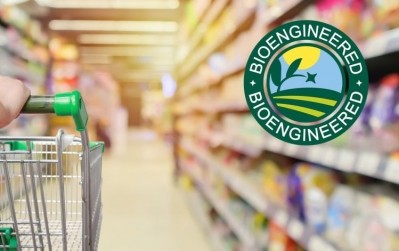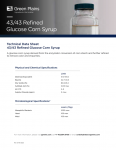'Some suppliers don't seem to understand the rule...' Bioengineered labeling law ‘proving to be confusing as well as onerous,’ says FoodChain ID

As FoodNavigator-USA highlighted in its recent analysis of the new law, “One common theme is that there is conflicting interpretation of what is required or adequate to comply by manufacturers and their suppliers,” explained Nate Ensrud, general manager, technical services, at FoodChain ID.
“For example, some suppliers don't seem to understand the rule and as a result are unable to supply necessary documentation to their customers. They also do not seem to know when testing needs to be done to assure compliance.”
Echoing recent comments from trade association The Consumer Brands Association, he added: “Another struggle we've noticed is that suppliers are having trouble providing documentation in a timely manner due to the sheer volume of requests from their customers.”
‘Some suppliers don't seem to understand the rule…’
The record keeping component of the NBFDS “can be especially difficult for companies with larger numbers of products or ingredients, or without sophisticated record-keeping systems already in place,” added Ensrud, noting that the 13 foods dubbed by USDA to be at high risk to be bioengineered “can be translated into thousands of ingredients and products sourced from numerous global suppliers.”
Even at this late stage, he said, “Very few companies seem to be able to provide documentation to validate the refining process. Keeping and storing this documentation is dependent upon whether the client has an internal system for storage and access.”
But he added: “The real challenge, however, is in suppliers feeling confident that they have the right information and the ability to store and possibly easily produce it within the two-year records retention requirement. Many manufacturers can store this information in their PLM system, but those systems don't typically have a means to flag those records and alert the customer if critical information is still required or missing.”
‘Suppliers are having trouble providing documentation in a timely manner…’
Some companies may simply choose to make bioengineered food disclosures regardless of whether the foods actually meet the definition if they’re unable to secure the relevant documentation to prove otherwise before Jan 1, said Ensrud.
But this is far from ideal, he stressed: “Those that are more conservative may label if they cannot produce the required information even if they'd prefer not to. However, several of the larger CPGs we've spoken are completely against ‘just sticking a BE label on their package to comply, and many of the companies we've interacted with have indicated a strong preference to not label unless it is required.
“Instead, they are doing the hard work now to clean up their supply chain and are committed to full transparency. They do not want to be perceived to be hiding anything.”
“If the end product is highly refined [such that it doesn’t actually meet the definition of ‘bioengineered, because it doesn’t contain detectible modified genetic material], these companies too, may choose to voluntarily disclose in some cases,” he said.
“Regardless, none of the customers we've spoken to want to have a label that is inaccurate.”
What does the law require?
Compliance with the NBFDS – which requires firms with annual sales of >$2.5m to label ‘bioengineered’ foods, beverages, and supplements – is mandatory from January 1, 2022.
The law - which is being challenged in court by some groups who believe it doesn’t go far enough - defines bioengineered foods fairly narrowly as those that “contain detectable genetic material that has been modified through certain lab [in vitro rDNA] techniques and cannot be created through conventional breeding or found in nature.”
In practice, this means that many highly-refined ingredients (starches, oils, sweeteners, emulsifiers) from widely bioengineered crops such as corn and soy will likely not require labeling, because the modified material is not detectable through testing.
However, the onus is on manufacturers to go through USDA's published list of bioengineered foods, identify any ingredients they use that may be derived from these crops, and then contact suppliers to determine whether they need to be labeled.
There are four labeling options (see box), but the two most popular are a written ‘Bioengineered food/Contains a bioengineered food ingredient' disclosure, or the ‘Scan here for more food information' digital disclosure option, which many firms like because it doesn’t actually contain the word ‘bioengineered,’ plus if you're not sure yet if your ingredients count as ‘bioengineered,’ you can update your packaging now, and then update your landing page later.
** FoodChain ID’s Bioengineered Compliance Service identifies products containing BE ingredients, offers pathways to achieve compliance, and provides recordkeeping and supply chain management using the firm’s SupplyTrak cloud-based compliance database, which maps customer’s supply chains, and shares data between programs (Non-GMO Project Verification/USDA Organic/BE Compliance).
If disclosure is required, FoodChain ID will recommend appropriate disclosure per the requirements of the NBFDS, but also offer options on how to avoid using bioengineered substances should clients be keen to avoid BE labels.
The NBFDS identifies three ways firms can determine that modified genetic material is not detectable:
- By using records to verify a food is sourced from a non-bioengineered crop (such records may include organic certification; country of origin records that show the food is imported from a country that does not produce bioengineered crops; or affidavits from suppliers stating the food is sourced from non-bioengineered crops).
- By using records to verify a food has been subjected to a refinement process that has been validated to render modified genetic material undetectable.
- By maintaining certificates of analysis (CoA)or other testing records that confirm the absence of detectable modified genetic material (eg. CoAs showing that each batch or lot of a food or ingredient was tested and does not contain detectable modified genetic material). Given that testing is getting more sophisticated, there is the possibility that modified material that is undetectable using current testing techniques may be detectible in future using more sophisticated tests, presenting challenges, say attorneys.
Once a refining process has been validated to render modified genetical material in a food undetectable, additional testing is not necessary to confirm the absence of detectable modified genetic material.
However, USDA will not be maintaining a list of validated refining processes, given the proprietary nature of food production, so it’s up to food manufacturers to work with suppliers to determine whether the processes they use make modified genetic material undetectable.
There are four disclosure options:
- On-pack text: 'Bioengineered food' or 'Contains a bioengineered food ingredient'
- USDA approved symbol (pictured right)
- Electronic or digital link: 'Scan here for more food information' or 'Call xxxx for more food information'
- Text message disclosure: 'Text [command word] to [number] for bioengineered food information.'
- Voluntary disclosures: Foods that do not meet the definition of bioengineered but are derived from bioengineered food may be disclosed voluntarily using a 'derived from bioengineering' symbol or a phrase such as 'corn derived from a bioengineered source.'
What's NOT covered by the NBFDS? Most animal meats and eggs; incidental additives; refined foods where bioengineered material is undetectable; meat/milk from animals fed bioengineered feed; certified organic food






















